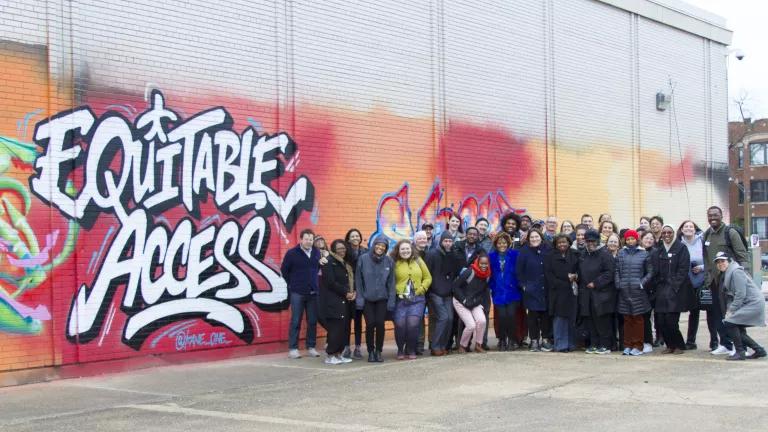Should CA Seek Another Life Extension for Diablo Canyon?
In an op-ed calling for the nuclear power plant’s operating license to be extended past 2025, Steven Chu and Ernest Moniz acknowledge that the process would be “complex.” It wouldn’t just be complex; it would be hugely expensive and wrong.

Diablo Canyon Architectual Rendering-1968
In a recent op-ed calling for the Diablo Canyon nuclear power plant’s operating license to be extended past 2025, Steven Chu and Ernest Moniz acknowledge that the process would be “complex.” It wouldn’t just be complex; it would be hugely expensive and wrong. The supposedly “new” arguments that the former US Secretaries of Energy raise were all considered back when the owners of Diablo Canyon, members of the host communities, union representatives and environmental groups (including NRDC) worked out a plan together in 2016 to extend the life of the plant until 2025 and then retire it.
The Chu/Moniz op ed relies on a recent report by Stanford and MIT researchers. Unfortunately, that report is grounded in major errors and omissions, reflecting in part the authors’ failure to consult with any of the experts who spent years developing and negotiating the long-term “Joint Proposal” to retire and replace Diablo Canyon with zero-emission resources.
What is clearly an amply-funded Diablo Canyon revival campaign is a gross misallocation of resources that could have been avoided through a more collaborative approach, and its leaders should join NRDC and others in supporting much more promising approaches to decarbonizing California’s economy. Our disagreement is over means, not ends.
The new Stanford/MIT report was released on November 8, 2021 at a webinar keynoted by two distinguished professors, Steven Chu (coauthor of the op ed) and Arun Majumdar. Neither is listed as a contributor to the report itself, and Professors Chu and Majumdar evidently missed a key aspect of the Joint Proposal: without it, Diablo Canyon’s cooling water permit would have expired in 2018, forcing a permanent shutdown that would now be entering its fourth full year. The Joint Proposal proponents united in arguing successfully instead for a seven year extension, which synchronized the terms of the plant’s state water permit and its federal operating license.
For its part, the MIT/Stanford report rests on two palpably flawed assumptions: (1) replacing Diablo Canyon will be both costly and environmentally damaging because of heavy reliance on natural gas generation, and (2) Diablo Canyon’s operating life can be extended inexpensively for decades with relatively minor modifications to its cooling system, which relies on massive seawater intake that significantly harms marine life. But it was clear to all involved in the Joint Proposal that California regulators would never tolerate continued operation of an ocean cooling system in any way similar to that described in the Stanford/MIT report. PG&E would have been required instead to install a far more costly cooling tower alternative, pushing Diablo Canyon’s long-term operating costs far beyond the absurdly low Stanford/MIT estimate (1.5 cents per kWh).
As to the issue of replacement power, in 2018 the California legislature foreclosed the report’s natural gas-dominated replacement scenario. SB 1090 required that Diablo Canyon be replaced without triggering any increases in emissions of greenhouse gases or other pollutants. In response, the California PUC is actively overseeing aggressive clean energy procurement, including a comprehensive order in June 2021 establishing a detailed implementation plan with a diverse portfolio of zero carbon resources. The 2016 Joint Proposal itself was based in substantial part on expert analysis (overlooked by the Stanford/MIT researchers) showing that replacing Diablo Canyon with a diverse mix of energy efficiency, renewable resources and electricity storage options would be far less costly than continuing to operate a giant, inflexible plant past 2025. Both the California PUC and the state legislature have now endorsed that conclusion, and in March 2021 the Federal Energy Regulatory Commission declined an invitation to overturn it.
During their webinar on November 8, the Stanford/MIT authors also tried to explain how the plant’s operating lifetime could possibly be extended, since the plant’s owner (PG&E) has made clear repeatedly that it will not undertake the herculean efforts required even to reopen the issue before multiple state and federal authorities. One of the MIT authors (Professor Jacobo Buongiorno) speculated that perhaps the state of California could be persuaded to buy the plant and then try to navigate those regulatory thickets at taxpayers’ expense. Here it should suffice to say that no one familiar with the modern history of Diablo Canyon and California state energy policy would advance such a suggestion. Better by far to unite around climate solutions that can actually work in California and elsewhere.


